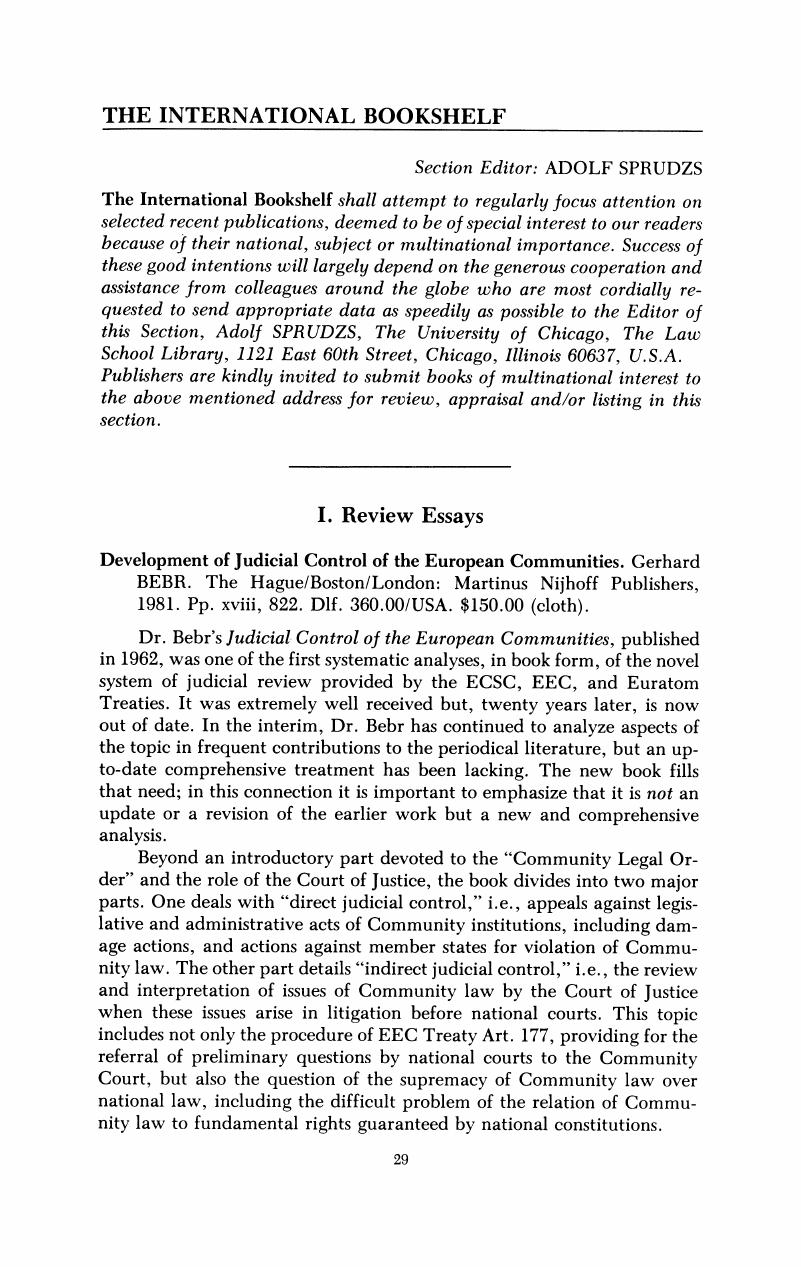No CrossRef data available.
Published online by Cambridge University Press: 28 February 2019

1. Preliminary Ruling No. 102/81 (Nordsee), [1982] E.C.R. ________. For comment see Grunwald, “Die Entwicklung des Gemeinschaftsrechts,” [1982] Europarecht 254, 281–84.Google Scholar
2. Hay, “Une approche politique de l'application de l'Article 177 de Traité CEE par les jurisdictions nationales,” 7 Cahiers de Droit Européen 503, 506-07 (1971).Google Scholar
3. Preliminary Ruling No. 283/81 (Soc. CILFIT v. Ministry of Health, Rome), [1982] E.C.R._________, European Law Letter, October 1982, pp. 3–4.Google Scholar
4. The Court had introduced this notion in the early leading Case No. 26/62, Van Gend & Loos v. Netherlands Inland Revenue Administration, [1963] E.C.R. 1. It had there said that a restriction of an action for infringement of the Treaty to the procedures of Arts. 169 and 170 would remove all direct legal protection of the individual rights of nationals of the infringing Member State and that the matter of possible infringement should therefore be capable of being raised indirectly in an Art. 177 procedure. CILFIT, supra n. 3, now states that Art. 177 was not intended to provide a new and additional appeal against national decisions. The notion of the “private attorney general” is being limited.Google Scholar
5. Case 244/80, [1981] E.C.R. 3045.Google Scholar
6. Bebr, “The Possible Implications of Goflia v. Novello II,” 19 C.M.L. Rev. 421, 441 (1982).Google Scholar
7. An example is Joint Cases Nos. 28-30/62, Da Costa en Schaake N.V. v. Netherlands Fiscal Administration, 9 Recueil de la jurisprudence de la Cour 59 (1963). For discussion of these solutions see Hay, Federalism and Supranational Organizations 138-144 (1966).Google Scholar